GIZMO Virus Lytic Cycle Gizmo Handout.pdf. Rated A+. Download to score A+
Document Content and Description Below
Vocabulary: bacteriophage, capsid, host cell, lyse, lytic cycle, virus Prior Knowledge Questions (Do these BEFORE using the Gizmo.) 1. A computer virus is a program that can copy itself and infect a... computer without the permission of the owner. How do you think a computer virus compares to a real virus? Gizmo Warm-up A virus is a microscopic particle that can infect a cell. Viruses are primarily composed of a protein coat, called a capsid, and nucleic acid. In the Virus Lytic Cycle Gizmo™, you will learn how a virus infects a cell and uses the cell to produce more viruses. 1. Viruses are extremely small. A typical virus is about 100 times smaller than a single cell, such as a bacterium. Label the virus and a bacterial cell in the image at right. 2. Bacteriophages are viruses that infect bacteria. Based on the diagram at left, label the head, tail, tail fibers, and the strand of nucleic acid in the image at right. Reproduction for educational use only. Public sharing or posting prohibited. © 2020 ExploreLearning™ All rights reserved Name: Aashka Prajapati Date: 2020-11-27 similar to a computer virus, a real virus also copies the genetic information and corrupts it and sends it to other cells to corrupt those cells as well. 2. Have you ever been infected with a virus, such as the cold virus or flu virus? yes, a cold virus 3. If so, how did the virus affect you? sore throat, weakness, runny nose. Introduction: Unlike living organisms, viruses cannot reproduce on their own. Instead, viruses infect host cells, taking over the cell’s machinery to produce more viruses. This process is called the lytic cycle. Question: What are the steps of the lytic cycle? 1. 75.Observe: Use the navigation arrows on the DESCRIPTION tab to read about the stages of the lytic cycle. Using your own words, summarize each step of the cycle. Reproduction for educational use only. Public sharing or posting prohibited. © 2020 ExploreLearning™ All rights reserved Activity A: Lytic cycle Get the Gizmo ready: ● If necessary, click Reset ( ). Step Summary 1 a lytic bacteriophage virus attaches itself to the bacterial cell. virus is a simple structure that is composed of a protein capsid, nucleic acid (DNA or RNA) and a tail section ↓ 2 The virus injects its nucleic acid into the bacterial cell. The nucleic acid uses the cell’s ribosomes to make virus proteins. The proteins break up [Show More]
Last updated: 1 year ago
Preview 1 out of 5 pages

Reviews( 0 )
Document information
Connected school, study & course
About the document
Uploaded On
Mar 29, 2022
Number of pages
5
Written in
Additional information
This document has been written for:
Uploaded
Mar 29, 2022
Downloads
0
Views
41

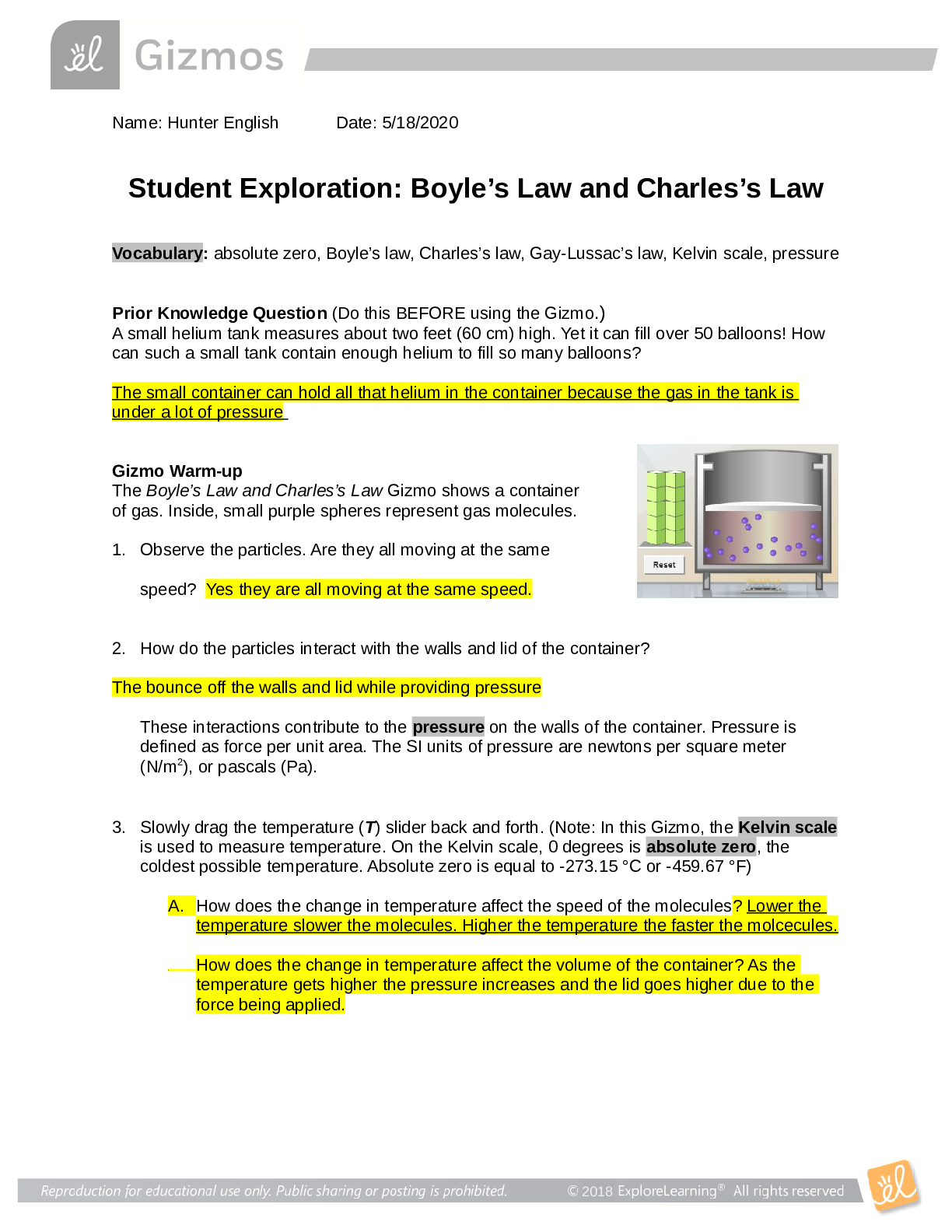

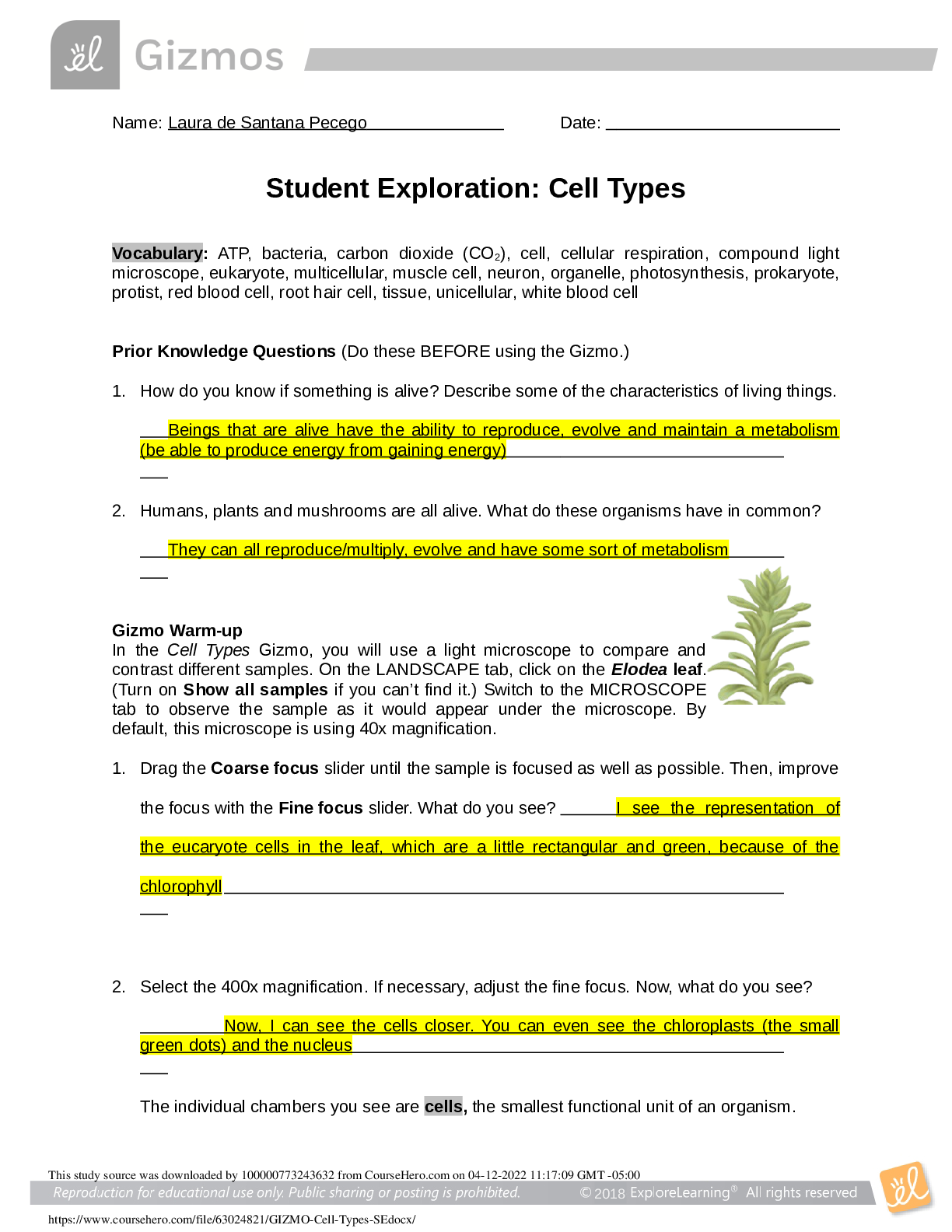

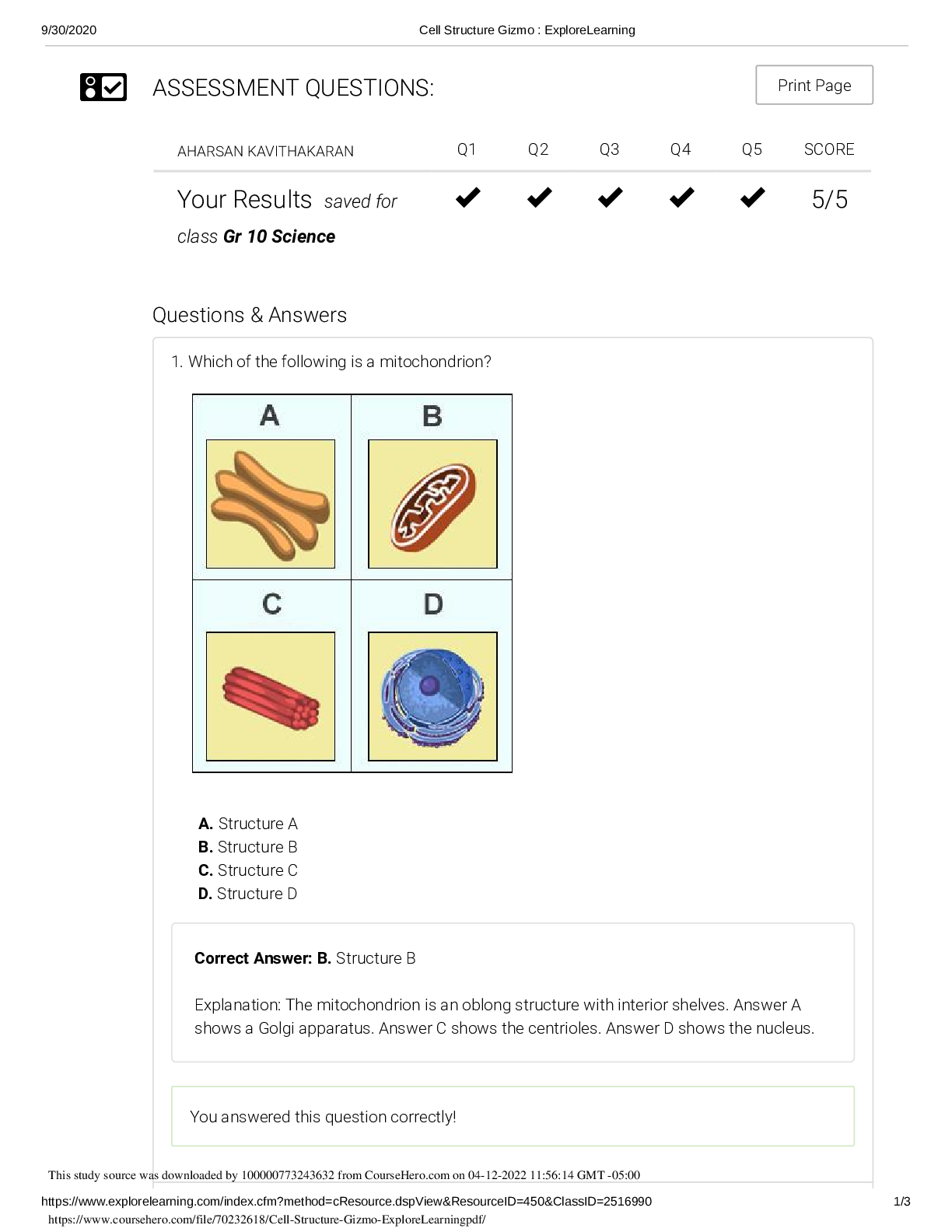
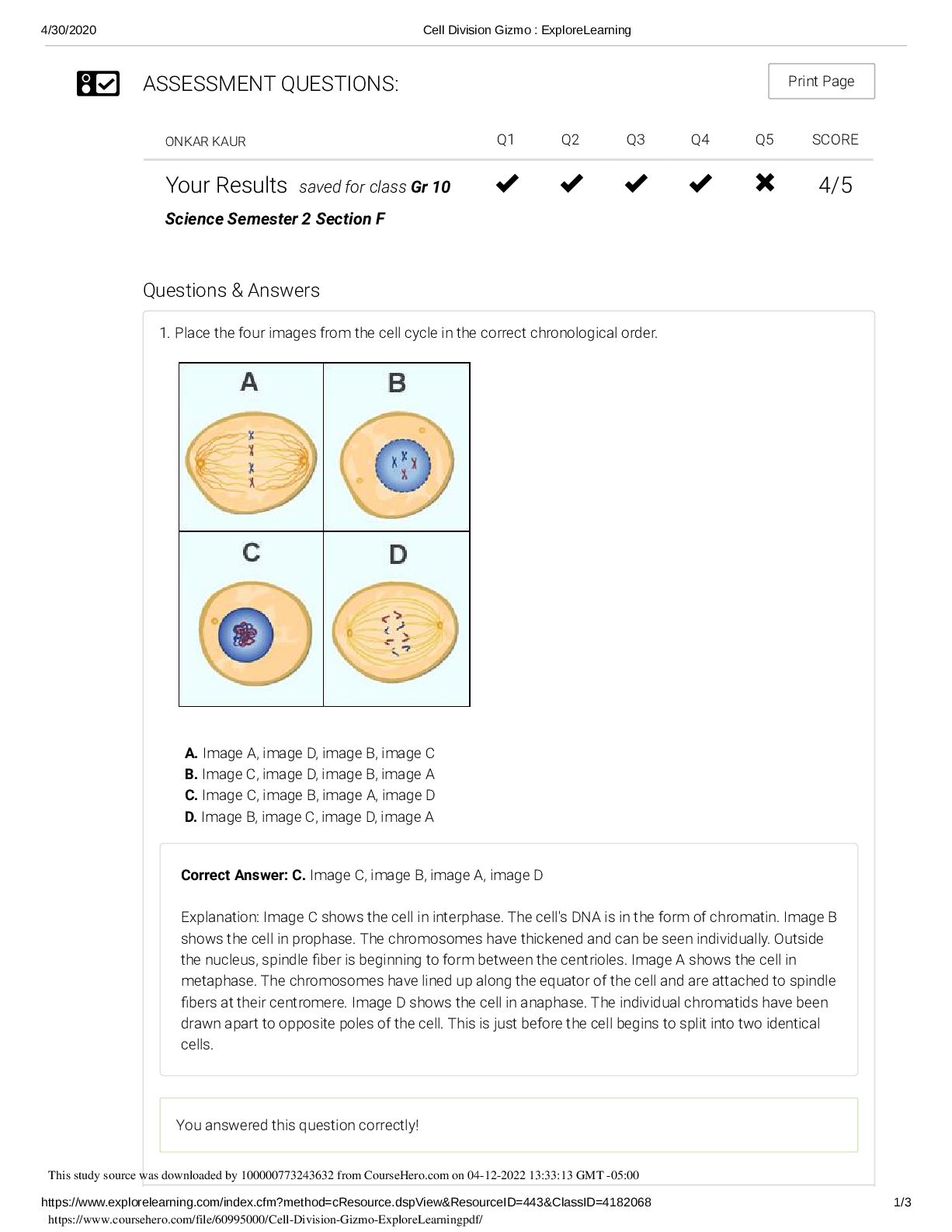


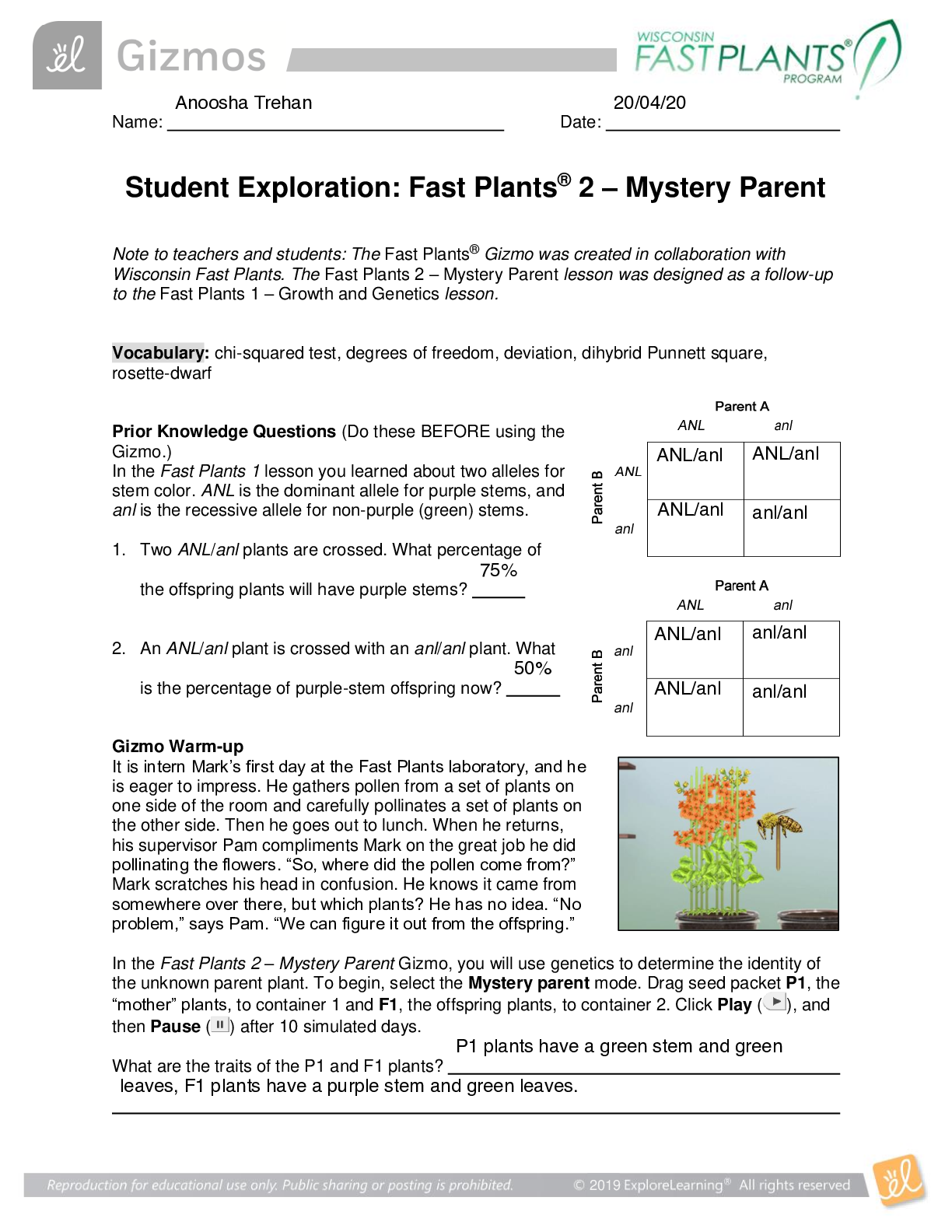

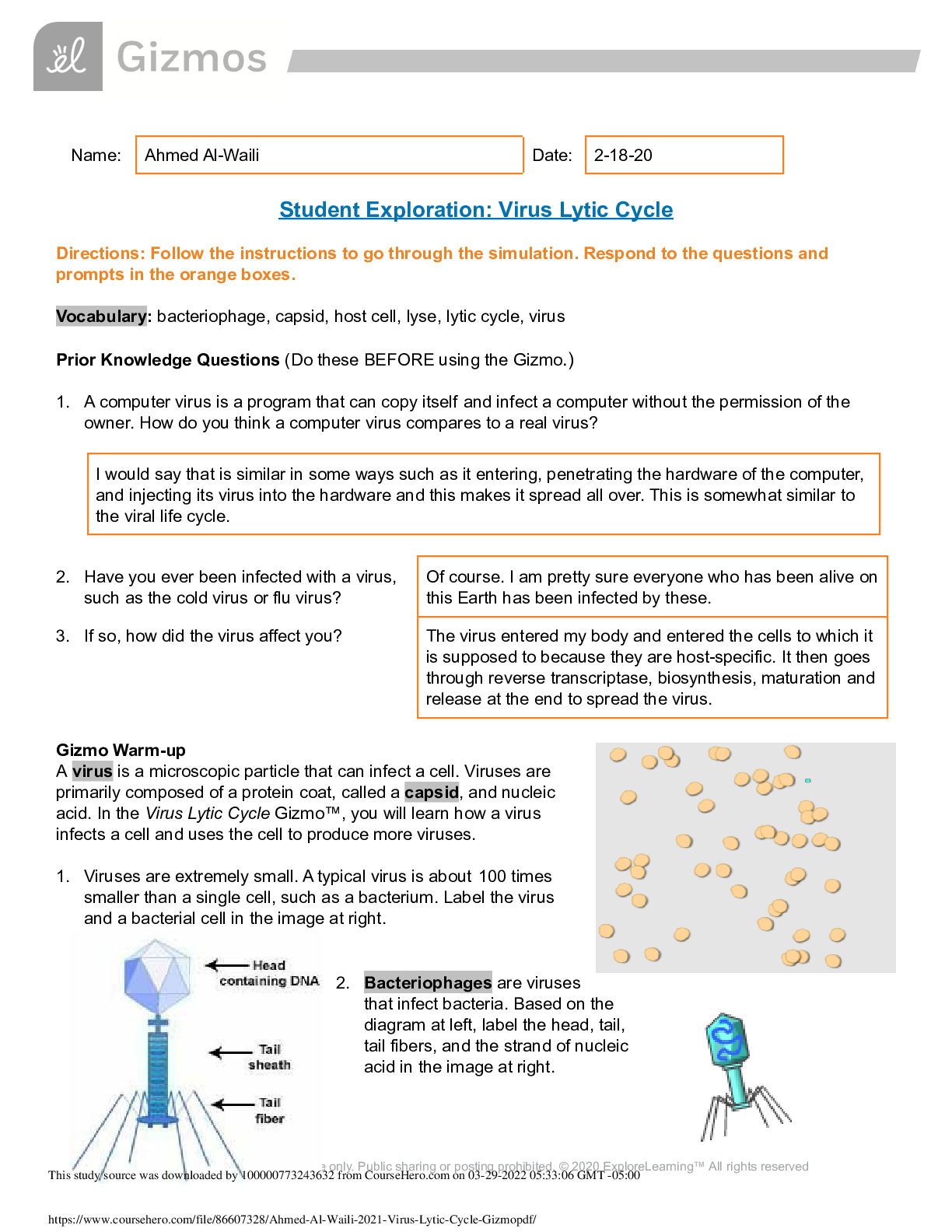
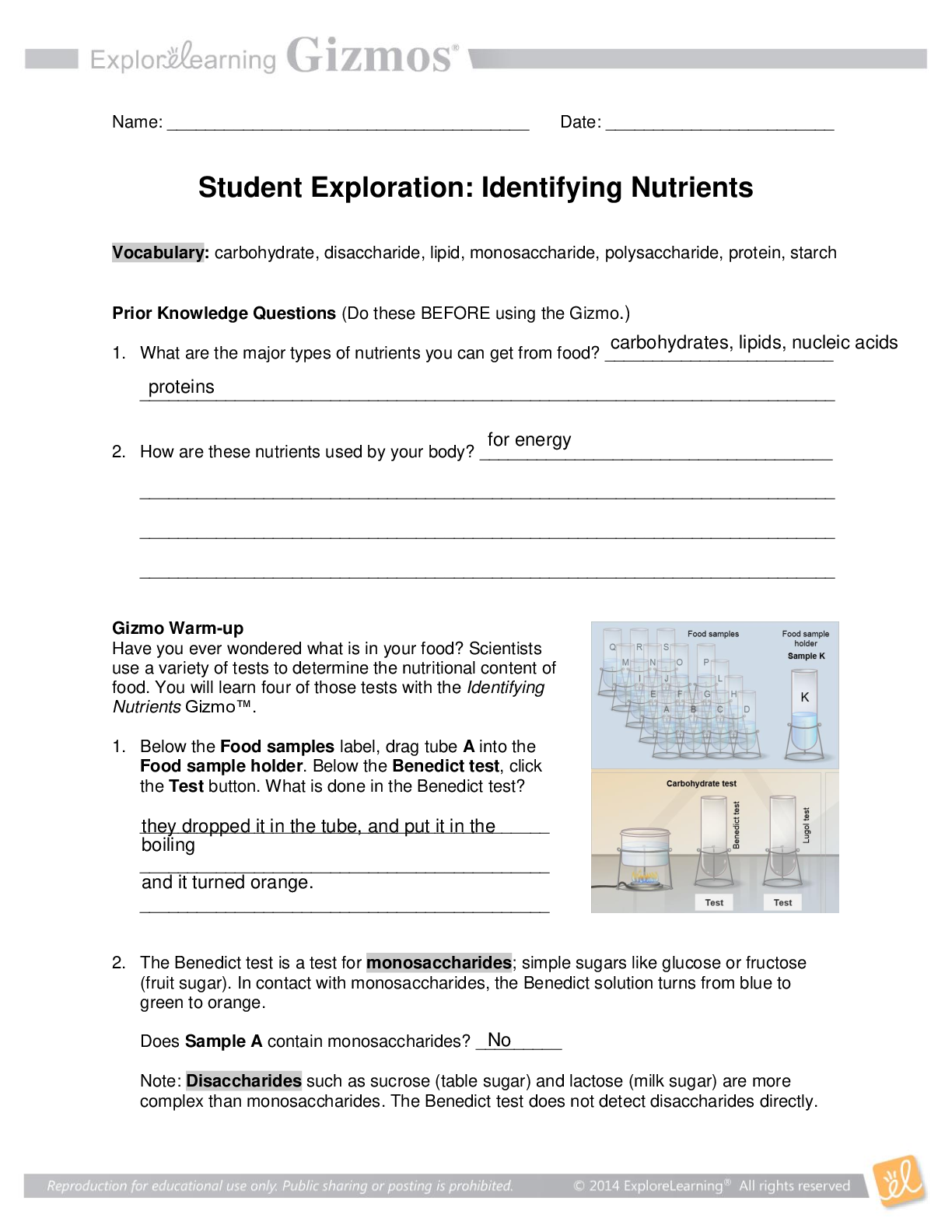
.png)
.png)
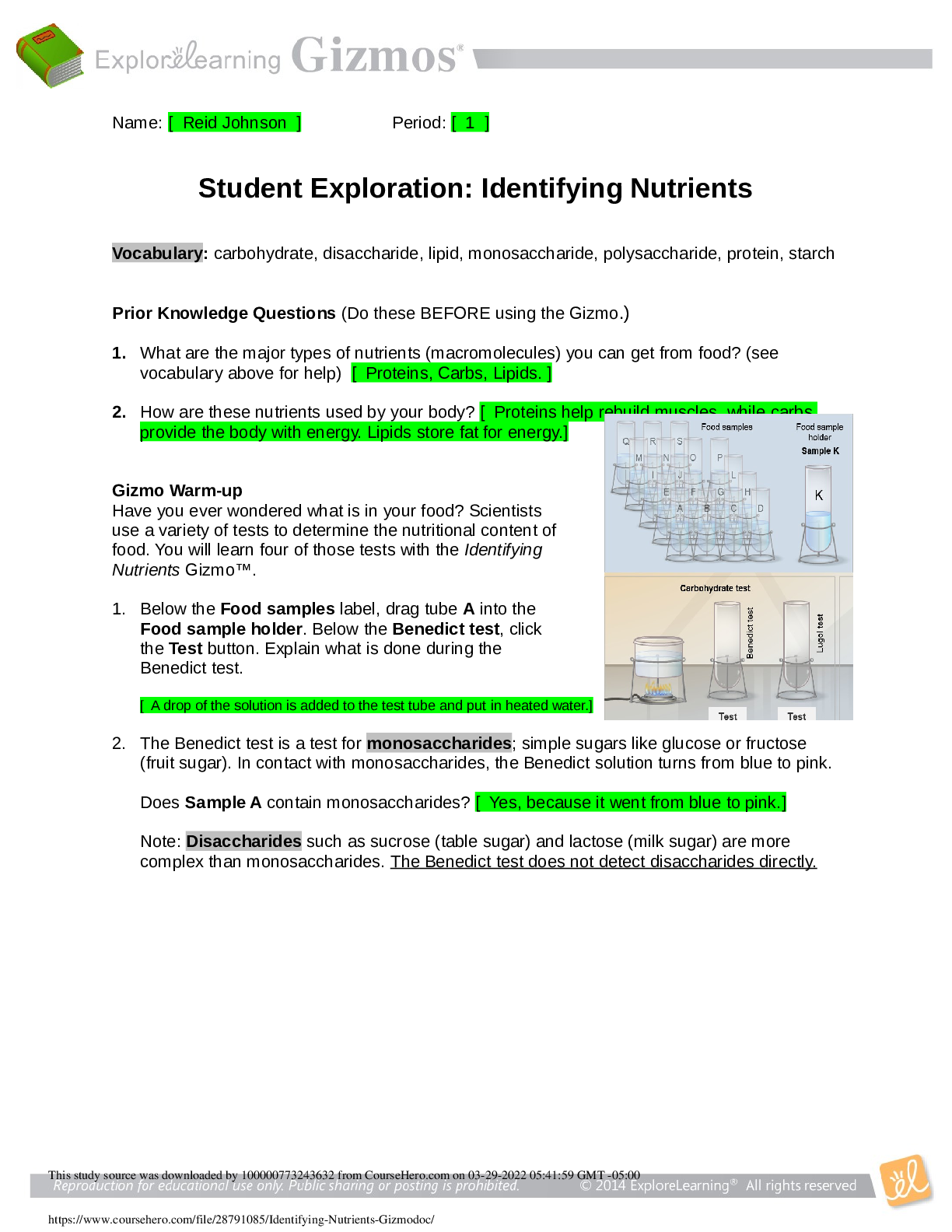
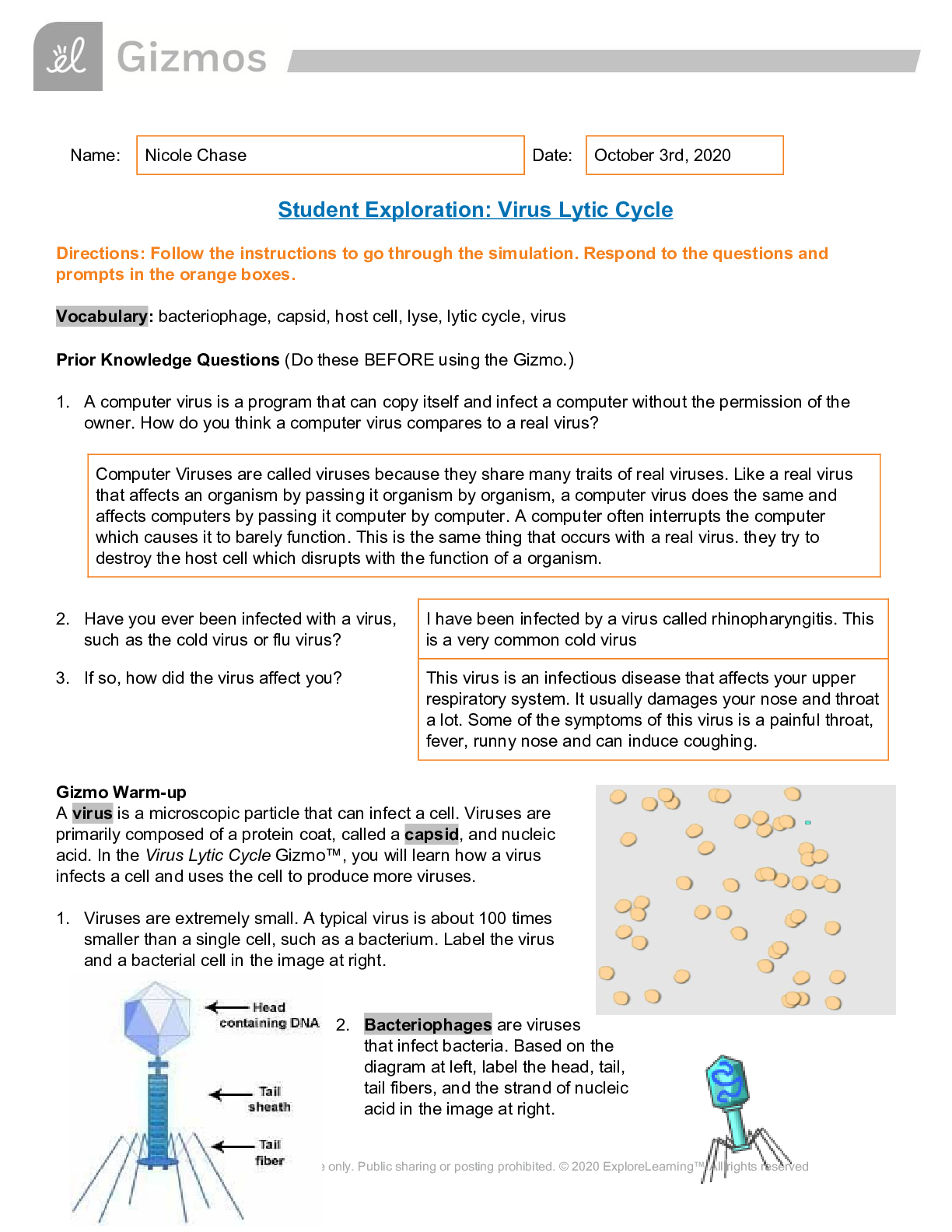

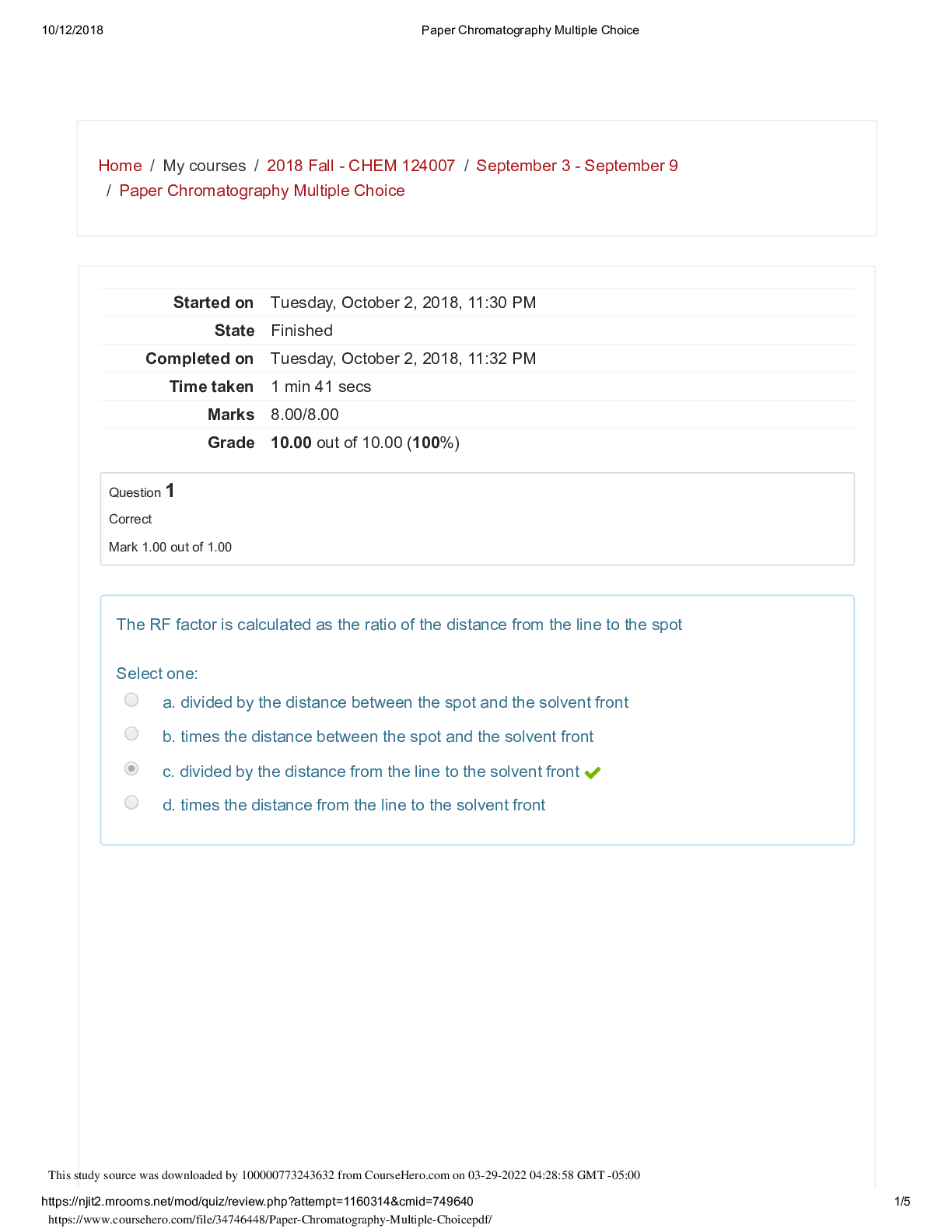
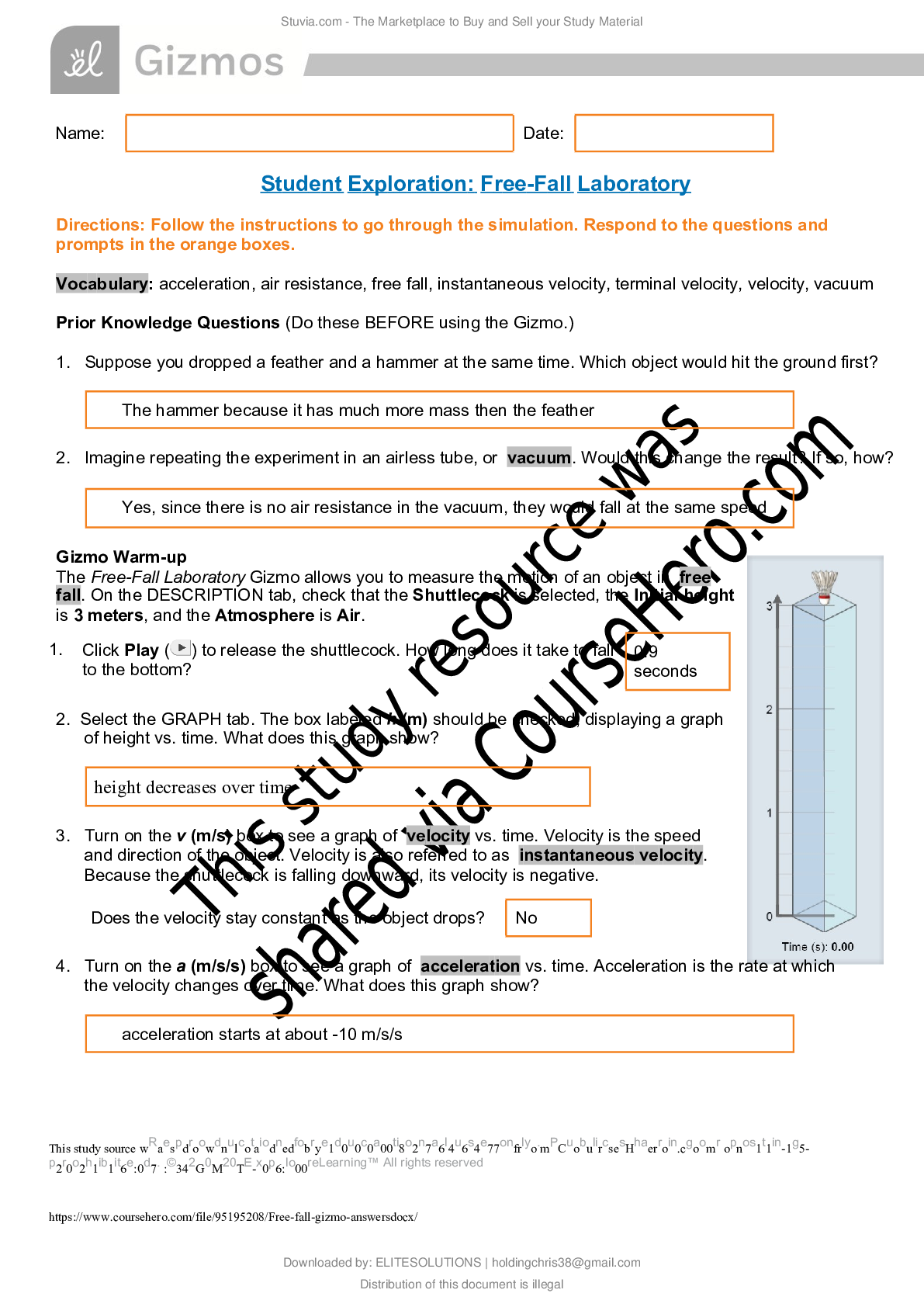



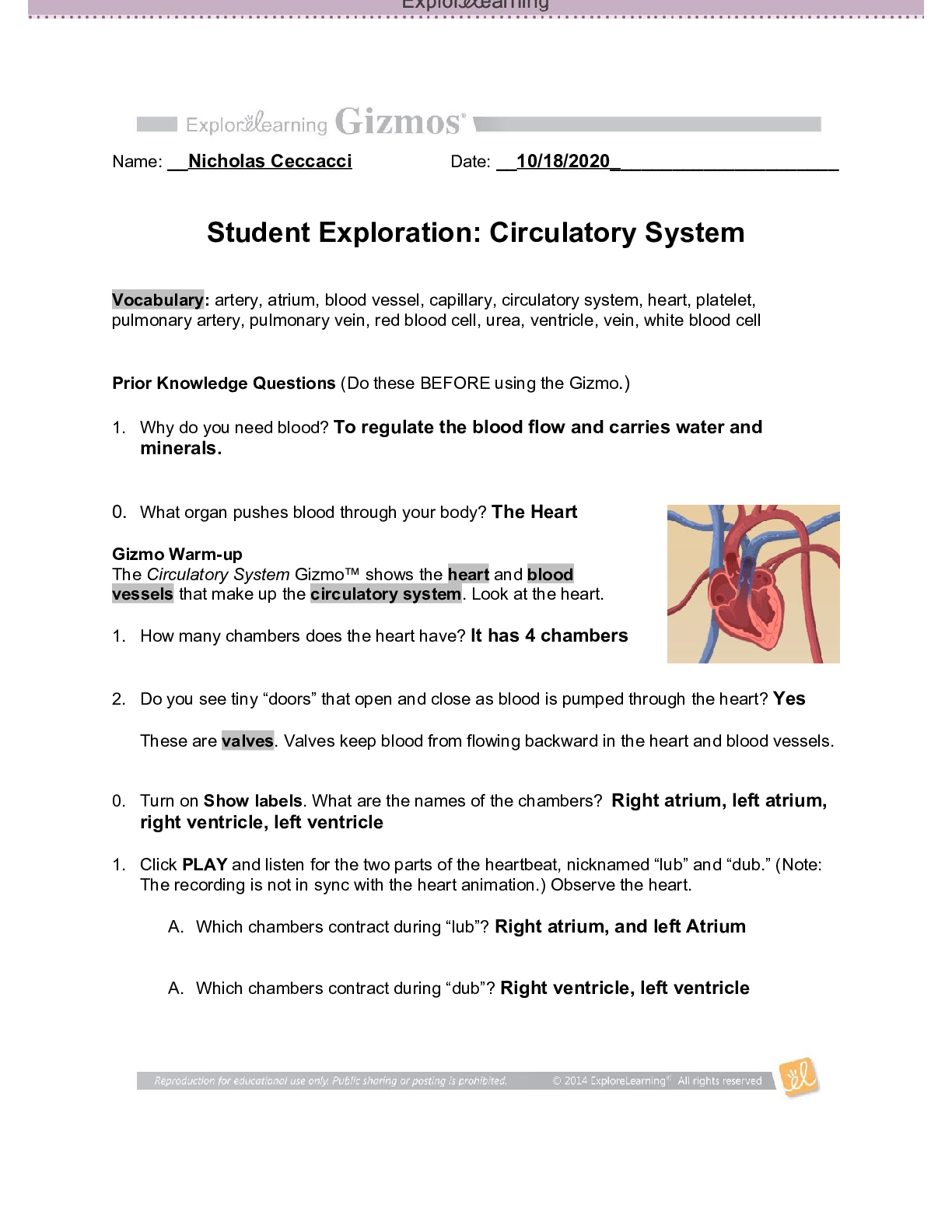
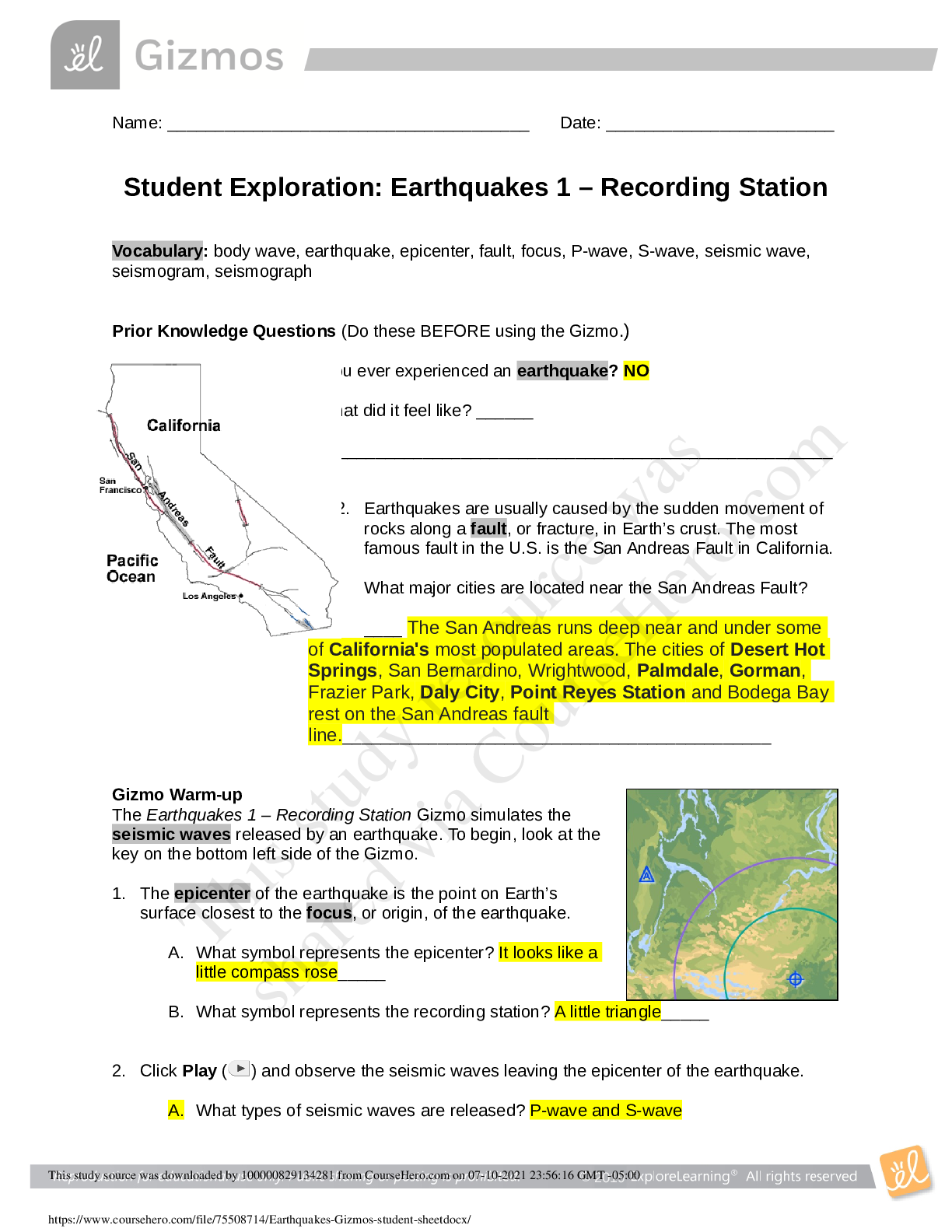

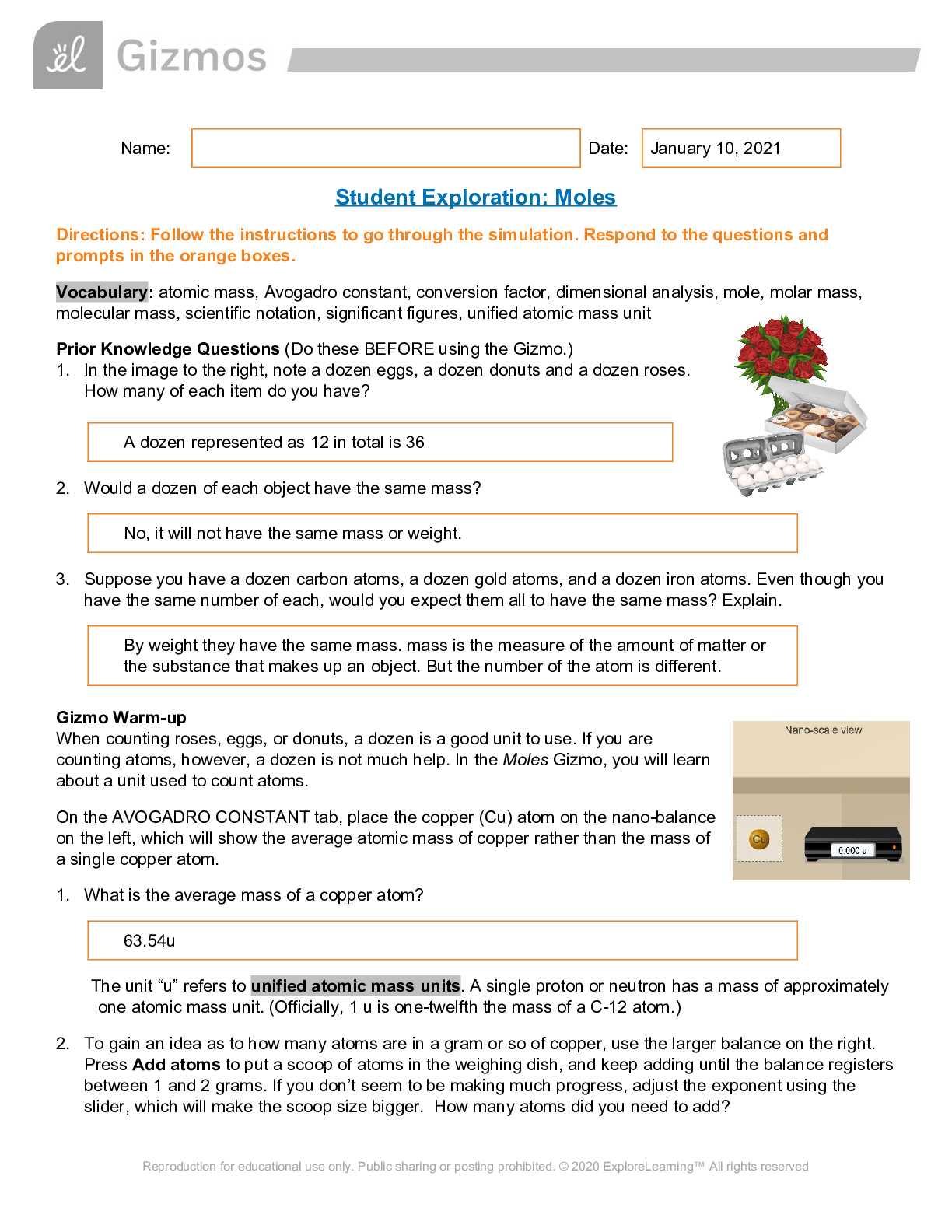
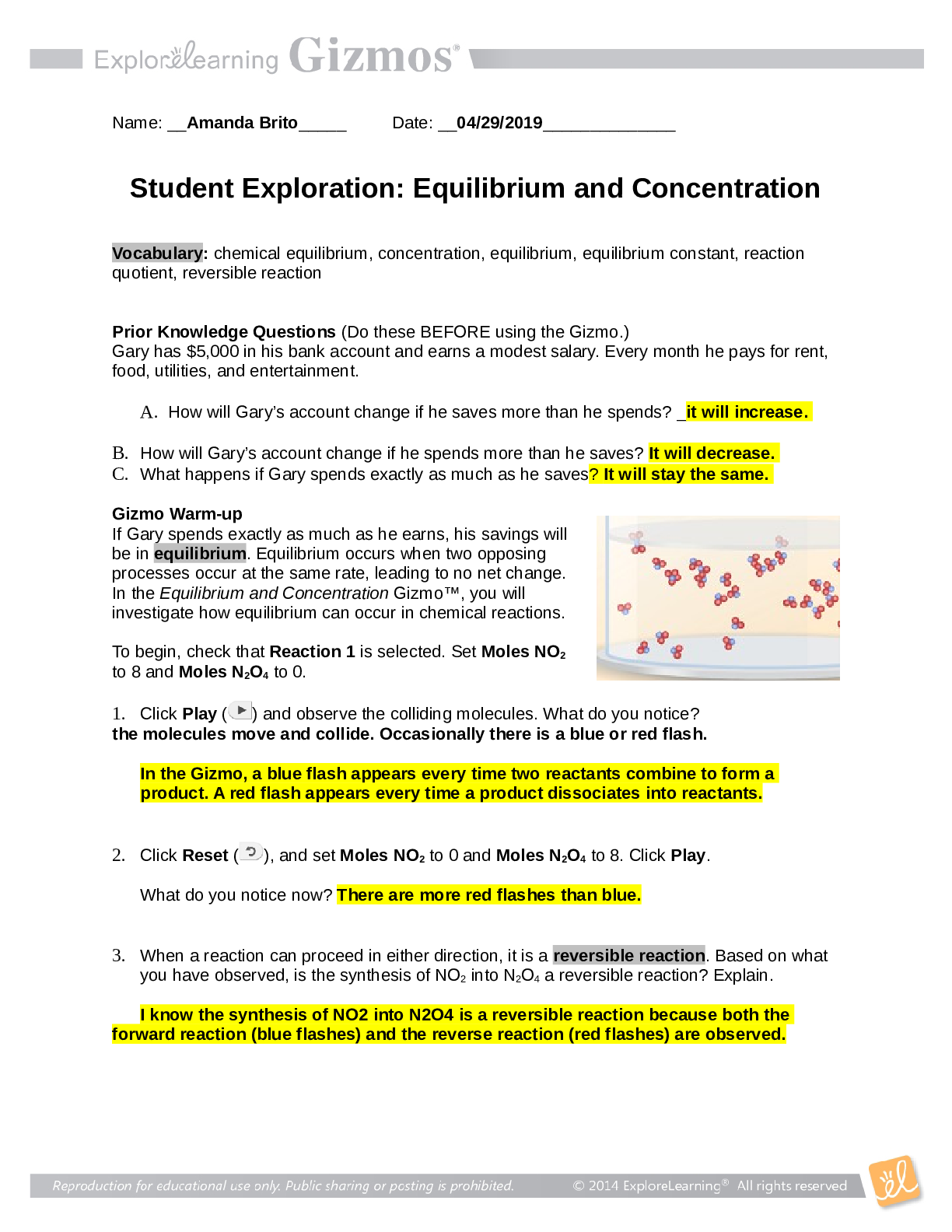
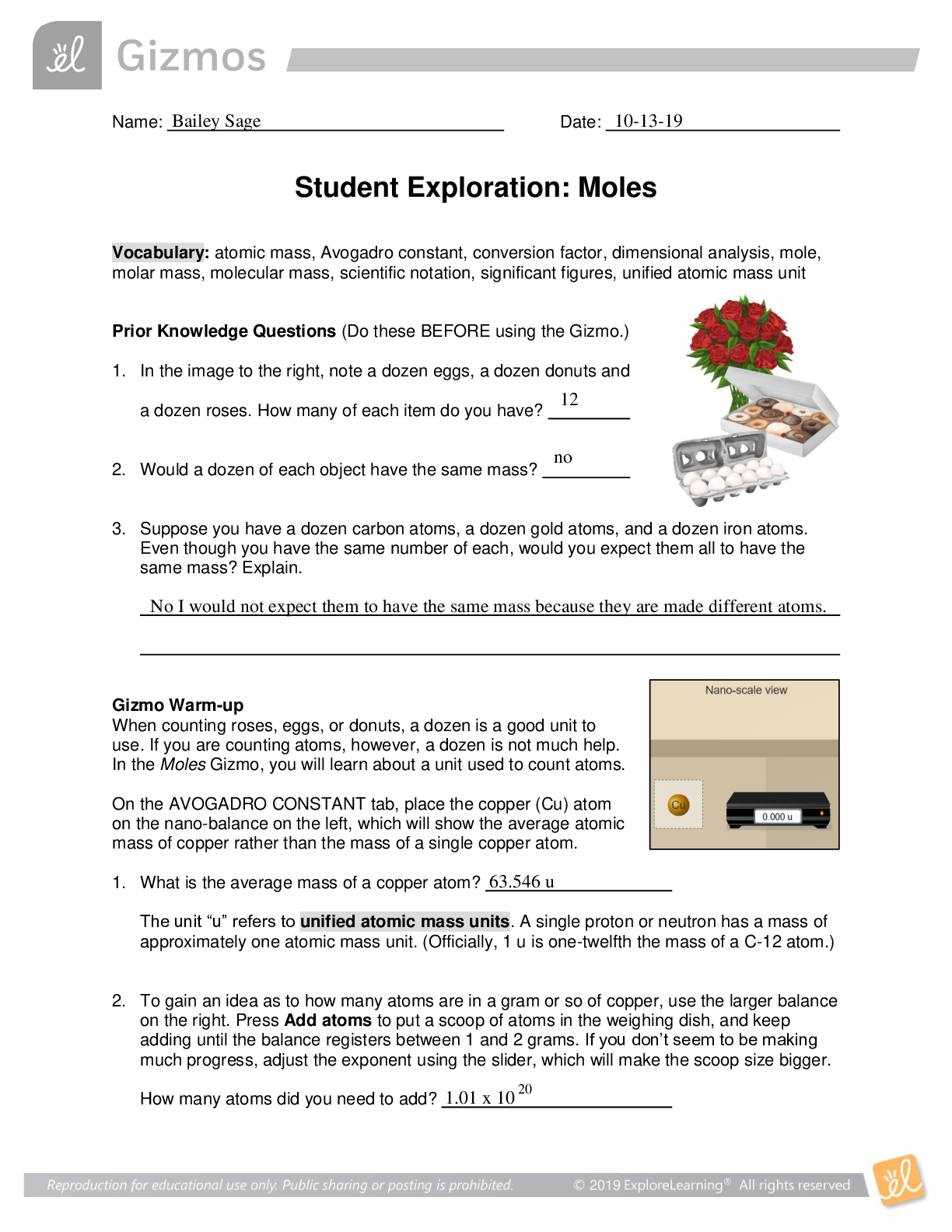
.png)

